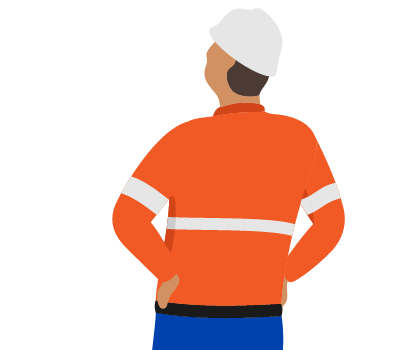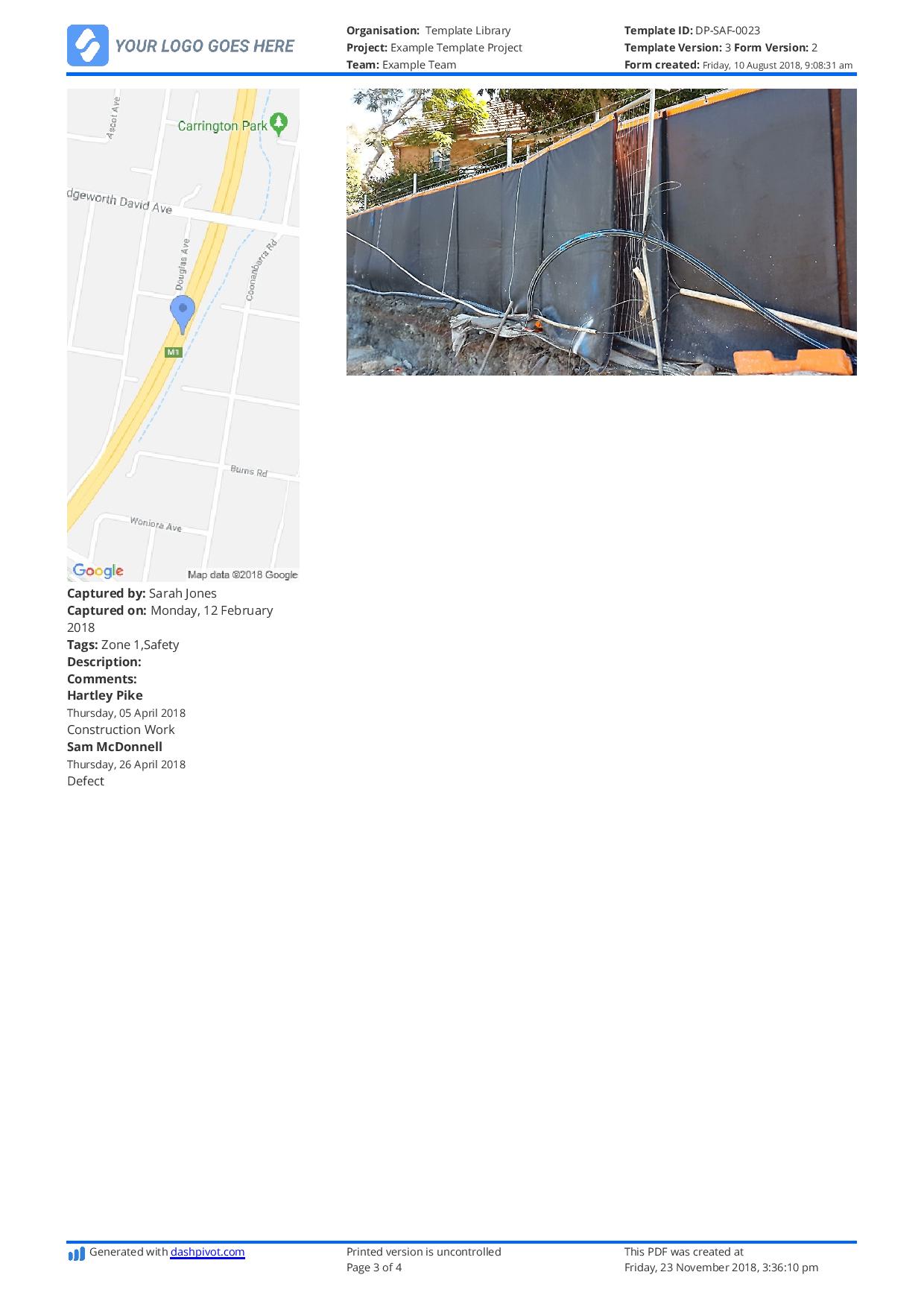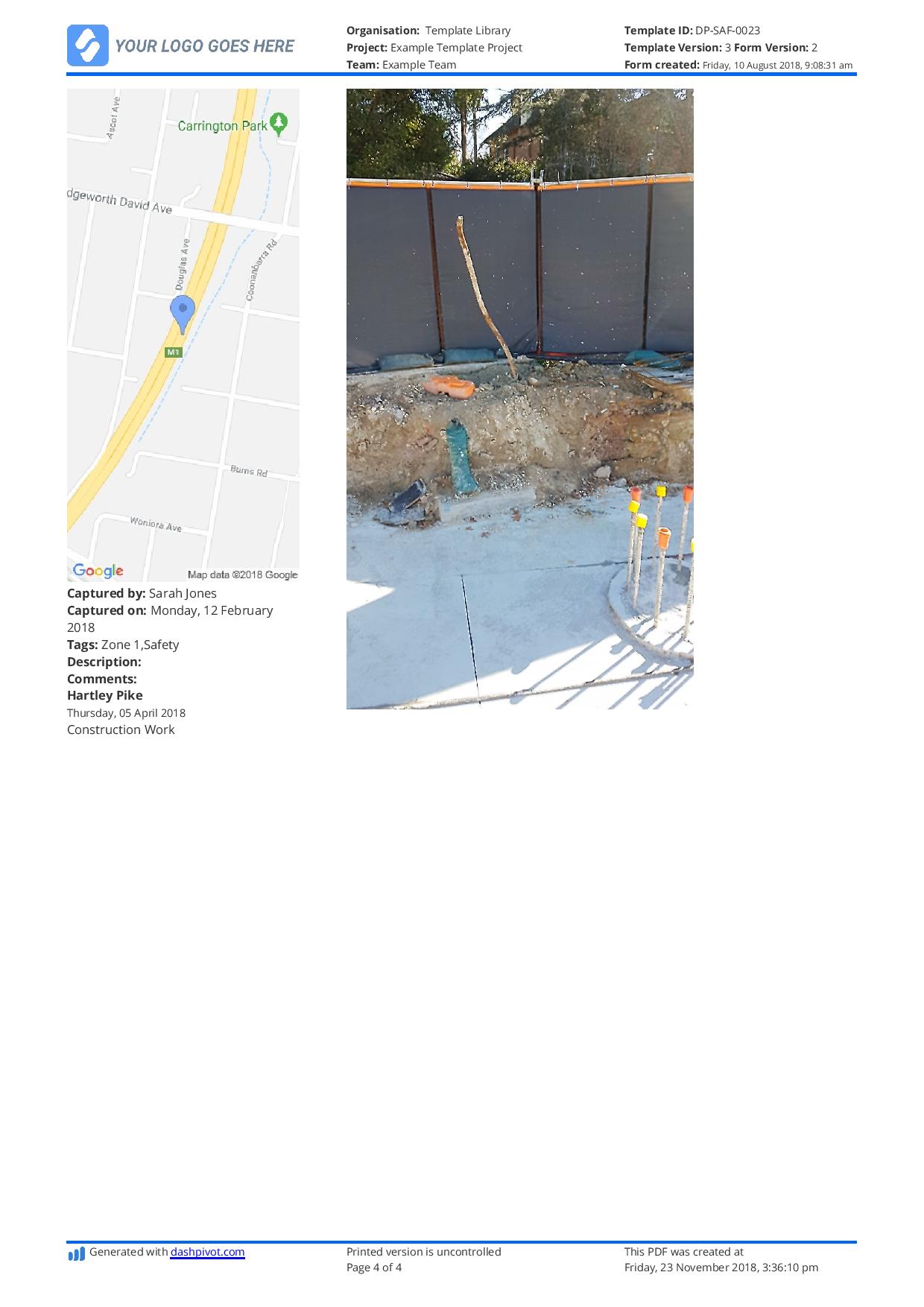Safety – Risk assessment example
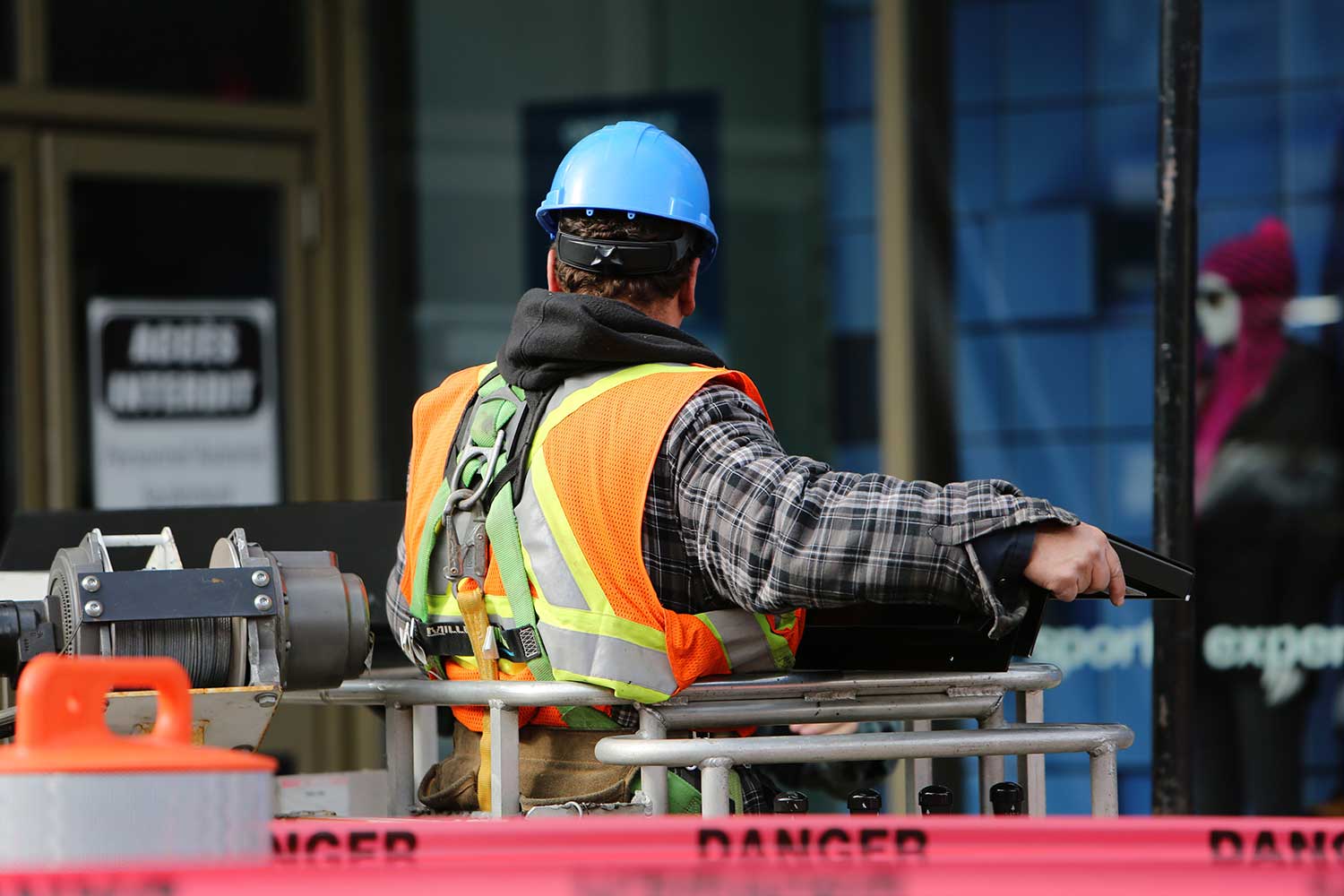
A risk assessment example and framework to guide your risk assessments
What is a risk assessment?
Risk assessments are one of the core safety activities which take place on thousands of job sites every day in order to keep people safe and projects moving forward.
With increased regulation and legislation, being proactive about safety has become a necessity for most companies, who now see safety as a core pillar of performance. The results of this more active and cognisant approach to safety has been improved safety, and a dramatic decrease in the number of injuries and preventable deaths on work sites and projects.
So where do risk assessments fit into this safety conversation and what role do they actually play?
There are actually three elements to a 'single' risk assessment, which describe the overall process or method of assessing risk:
1. Identifying hazards and risk factors which have the potential to cause harm
2. Evaluate and assess the risk associated with that specific hazard
3. Determine appropriate ways to mitigate, control or completely eliminate the hazard
All of these elements combine to create a comprehensive risk assessment. The cycle starts when a hazard is identified, and 'ends' when that risk or hazard has been efectively controlled through to good safety practices.
Because of this, you will be running a number of risk assessments concurrently, and will likely begin projects and specific jobs with a thorough risk assessment and risk register which outlines all of the potential risks on that project while updating, checking and monitoring other risks as they arise. Other reasons to conduct risk assessments include significant changes in processes, equipment and technology - as they change the 'state of play'.
Risk assessments are a constant part of project management and project planning for management, safety teams and all project parties and stakeholders.
Why are risk assessments important?
There are a few obvious reasons that risk assessments are important, starting with the fact that conducting risk assessments decreases the likelihood of injury to people.
Risk assessments are especially powerful at that design and planning stage, as they become preventative rather than reactionary in nature. If you get risk assessments right in the planning stages, properly prepare for those risks and then train and communicate with workers in the right ways, you can dramatically reduce the risk of safety issues.
Risk assessments are also important because they bring attention to safety. A risk assessment creates an awareness of the risks of a project or work; these risks can be unique in which brainstorming is critical to surface them - or they can be commonplace, in which case the risk assessment is a powerful tool for making people consider and think about it.
Lastly, risk assessments are critical to prioritising where management, safety teams and engineers spend their time and resources in order to get the best safety outcomes possible.
Risk assessments and hazard identifications should inform this prioritisation stage - with a defined and reliable scoring system for hazards which factors in the consequence of the hazard eventuating and the likelihood of it occurring.
Together, these combine to create a score which is then used to allocate resources effectively.
A risk assessment example
Risk assessments come in a number of shapes and sizes, so for our purposes today, we will take a look at a manual handling risk assessment.
This type of risk assessment is created and documented when - surprise, surprise - a manual handling activity is going to occur.
You can scroll down to find and see what this risk assessment looks like. It's a complete risk assessment in that it has the framework or form structure - and has been filled out.
The most pertinent parts of this example risk assessment, and the parts which should form a central part of your risk assessment framework are:
General record keeping information and instructions for risk assessment assessors
- This information is critical for safety audits and safety compliance while the instruction helps to identify the importance of proper identification for the person completing the document
Photos or 'evidence' of the workplace as well as a description of the task or activity being performed
- Maintaining solid evidence of the safety environment and activity being performed is important from an internal and external perspective and can be very important and informative for investigations and audits later on in the project
Hazard identification
- A series of hazard identification questions, yes/no's and comments about the hazard
Describe the controls for the task as well as an action summary
- More important than simply assessing the risk is creating some action steps whicch the company, project, team or individual can implement in order to stop the hazard from turning into an incident
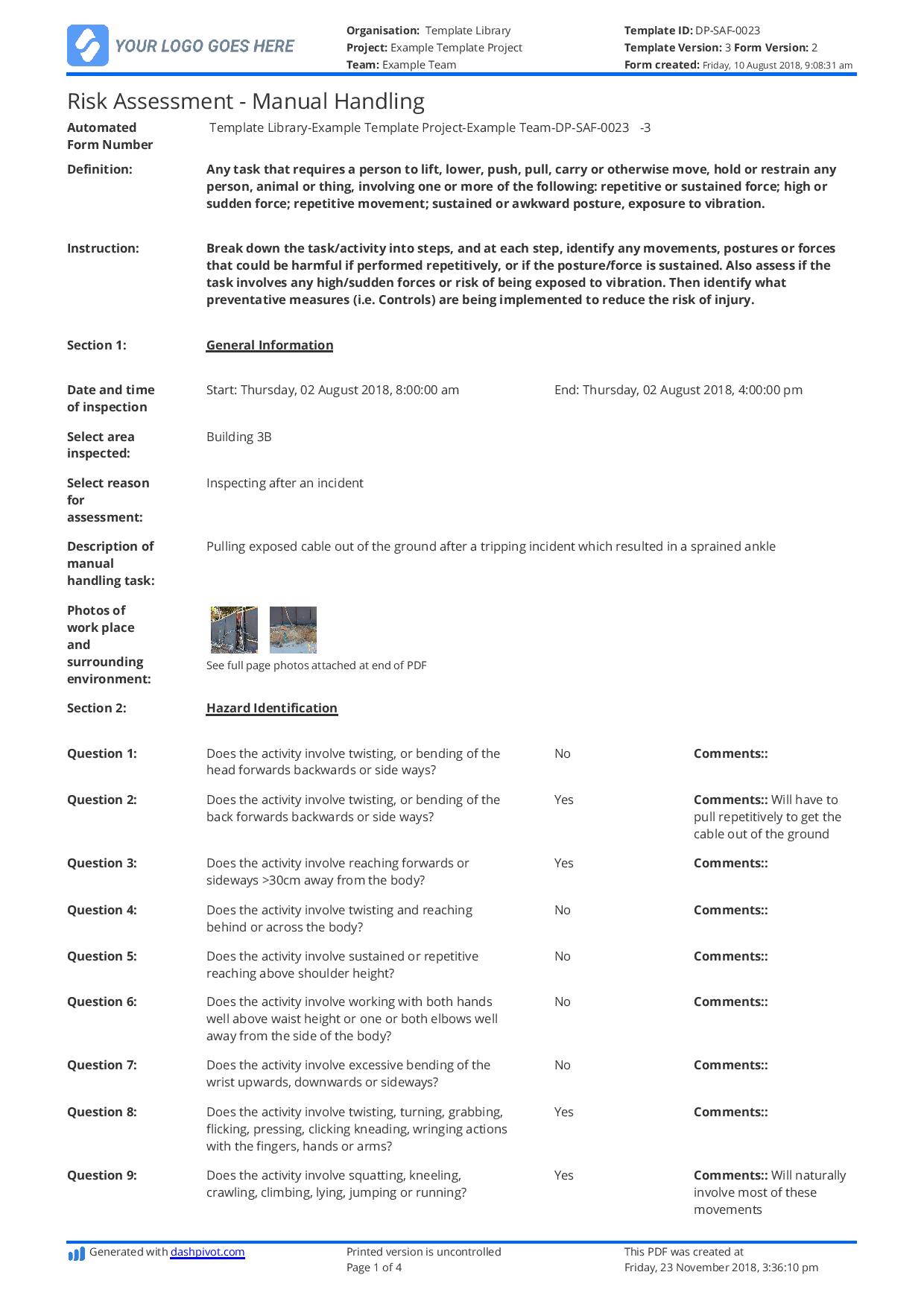
Use this risk assessment framework for your risk assessments free.
Creating a standardised and reliable risk assessment framework
The above framework and example risk assessment will hopefully help inform you what your risk assessment may look like in the wild. But this is only one part of the safety and risk assessment 'battle'.
The key to doing and maintaining an effective risk assessment process at your company comes back to your safety process and safety management system. Even with the best intentions (and best risk assessment form) you will need to create a framework which your workers can adhere to when assessing whether or not a risk assessment is required, and what those requirements are.
One of the best and most efficient ways to create a reliable risk assessment framework is to put the power of the risk assessment into the field workers - where the risk are and where they need to be assessed.
One of the easiest ways to do this is by using a risk assessment app and/or safety management system.
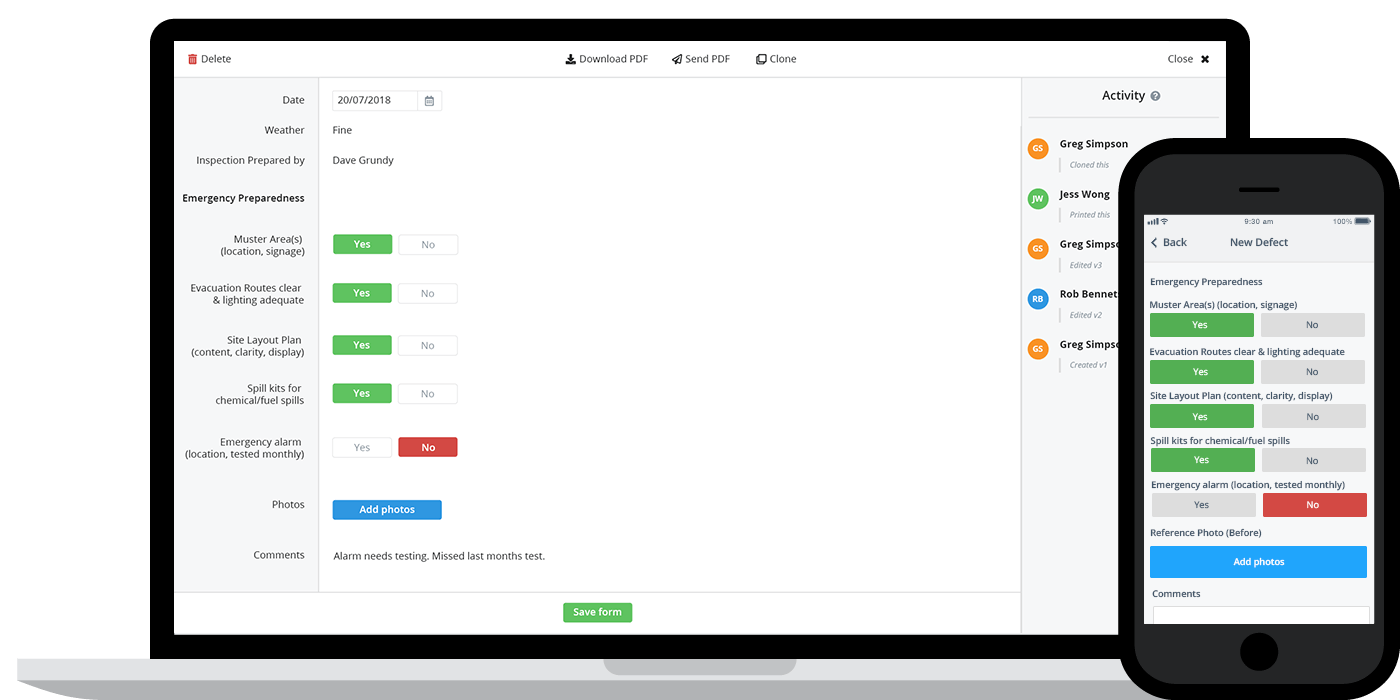
How these work can differ depending on which one you employ, but it essentially digitises and simplifies how risk assessments are captured, organised and tracked.
Workers on the ground can fill in risk assessment forms on their mobile or tablet and take photos and videos of the risk within the app, and then this data and information is automatically sent to the cloud where it can be assessed in real-time and where people can make quick and informed decisions about what to improve.
Using a risk assessment app also increases the frequency and ease with which risk assessments can be conducted. In the past, performing a risk assessment was a time-consuming and admin-heavy endeavour - which discouraged completion and reduced the flow of safety information. It's so easy (and normalised) to complete a risk assessment on a phone or tablet that you begin to get constant and clean data being piped into your management system.
This type of sophistication might not be for you right now, in which case deploying a standardised (And ideally digital) risk assessment form like the example you see above and below may suffice.
Either way, creating a standardised and reliable framework for your risk assessments will improve safety outcomes for all.
It has been excellent. We have been able to digitise our HSEQ and commercial processes.
Brian M.
Chief Operations Officer | Source: Capterra
